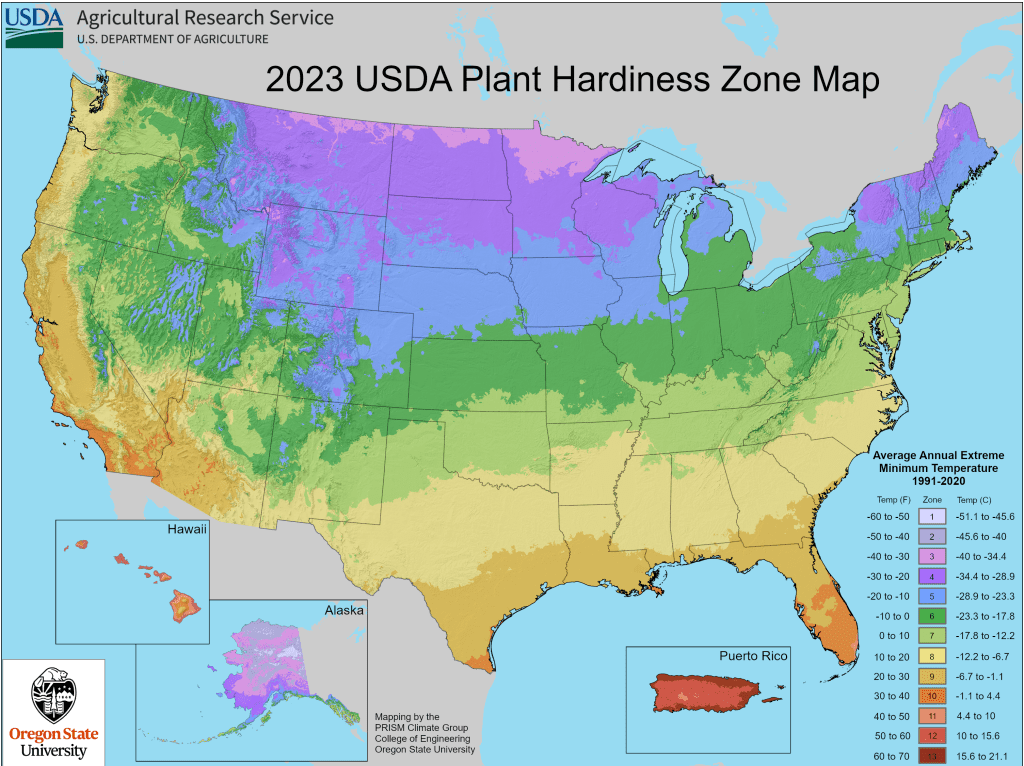
Not sure what 2024 will bring in terms of recession and consumer confidence levels, laws and regulations that impact that industry or even extreme weather? Our experts read the tea leaves to help you prepare.
The Economy
You only have to skim recent headlines to see the constant coverage of an impending slowdown or a recession. Taylor St. Germain, an economist with ITR Economics, says that while there is a psychological aspect to causing a slowdown, leading indicators have been pointing toward a slowdown for some time now.
“It’s really important to understand the magnitude of this downturn and from our perspective, this is a very mild downturn compared to downturns in the past,” St. Germain says.
St. Germain is challenging business owners to think about this recession differently, as he is seeing a lot of economic growth coming in 2025 and 2026.
“Given how mild this recession is, we’re urging business owners to be aggressive, to be thinking about making capital expenditures, to be hiring, to really be using the slower period in 2024 to be preparing for the growth that comes in ‘25 and ‘26,” he says. “I’m not concerned about businesses surviving ‘24. We’ve been through much worse. I’m more concerned that we won’t be prepared for how quickly the growth comes back in ‘25 and ‘26.”
He says there will be some strain on financials, but company owners should think beyond 2024 when planning.
2025 and 2026 are expected to be growth years as the Federal Reserve is expected to drop interest rates as inflation cools down. People will be borrowing and investing more as those rates come down.
“We’ll likely see the consumers find themselves in a strong financial position again, especially as inflation and rates come down,” he says. “They’ll find themselves with greater purchasing power out there in ‘25 and ‘26.”
With inflation decreasing, St. Germain says that it will be a lot harder to pass on price increases in 2024. He expects businesses to see pushback from consumers, putting pressure on company margins.
“You’re going to have people saying, ‘Well, your material costs are down in ‘24. We want you to lower your price,’” St. Germain says. “The response should be, ‘Well, we can’t lower our price because even though materials are down, we still have to pay people more.’”
He encourages maintaining your pricing through this downturn so you are in a strong financial position for 2025 and 2026.
St. Germain does expect inflation to pick back up in 2025 and continue through the second half of the decade. He encourages landscape companies to build their cash reserves while the markets are slowing so they are ready to deploy.
“If you need to borrow it to be investing in your business, take advantage of that borrowing because rates will go higher, likely in ’26, ‘27 and beyond.”
Some of the factors landscape company owners can monitor to keep a pulse on the economy include the construction markets, migration trends, capital expenditure activity and retail sales trends.
St. Germain expects single-family housing to grow in 2025, while commercial construction will go through some pain in late 2024 and 2025. He says these two types of construction are counter-cyclical.
“I think that it’s important to understand what sectors of the commercial construction markets will be doing well,” St. Germain says. “You’ll probably have better success targeting hospitals and education versus office buildings.”
He notes that regionally, things will vary across the country. States like Texas, where there is an influx in the population, will naturally result in more opportunities. St. Germain says that consumer spending has been slowing down as they have less money in their savings account, oil prices remain elevated and for a significant portion of the population, student loan payments are restarting.
With the tight labor market for the past few years, St. Germain says the unemployment rate is no longer a reliable indicator of the state of the economy and potential recessions.
St. Germain says there are concerns about how conflicts across the globe could cause supply chain disruptions and drive up inflation, preventing the Federal Reserve from reducing their interest rates. He says the Federal Reserve is also still seeking a soft landing and this could cause them to stay aggressive with their rates.
“There’s this delicate balance that the Federal Reserve has,” St. Germain says. “They tried to get inflation down to a level that they believe is a healthy level of inflation for a growing economy like the U.S., but there are times where they can overdo that by raising rates too high. If they raise rates too high, then you start to get the pullback in spending, you get the pullback in capex, and that weakens the economy in terms of overall economic growth. That can pull us into a recession because of the pullback in business investment and business spending.”
Consumer Trends
The economy is also impacting consumer trends. According to the 2023 Consumer Trends Index by Marigold, 60 percent of consumers are very pessimistic about the rising cost of living and economic outlook. Half of consumers are making less impulsive purchases with more doing research, waiting for sales and relying on loyalty benefits when purchasing from their favorite brands. When consumers are browsing online, it is increasingly on their mobile devices, so it is important to have your website optimized for those searching for landscaping companies on their phones.
The report says 59% of consumers are willing to pay more for their preferred brands. Meanwhile, 67 percent of consumers say a loyalty program is critically important to winning their lasting loyalty.
While you can’t reward long-time customers with a free drink after a certain number of purchases like Starbucks, you can develop your own program that works for your organization to show your appreciation to loyal clients. It’s also important to understand a loyalty program goes beyond offering discounts. It should foster a community, recognize customers as individuals and deliver personalized results based on this.
Consumers are loyal to brands, but a third have switched from a brand over the last 12 months due to a poor loyalty program, the online customer experience and data privacy issues. The good news is that 77% of these customers who have switched can be won back with the right encouragement.
Email remains the most effective channel for driving sales, as 52% of consumers have purchased a product directly as a result of an email they received in the last 12 months. The key to making your emails to clients stand out in their inboxes is to take personalization beyond just having a first name in the subject line.
Emailing clients about services they’ve expressed an interest in that fit their budget can be an effective touch that converts them to a sale. Truly personalized messaging is important, as 49% of consumers felt frustration when they received irrelevant content or offers.
Meanwhile, digital advertising has been declining in its effectiveness as more consumers become banner-blind to ads. Only 25% of consumers made purchases directly from a banner ad.
The Government
2024 marks an election year, and no matter what changes or stays the same, the government will impact how you conduct business. Not only are there congressional elections and the presidential election, but there are also 48 state elections this year.
Andrew Bray, NALP senior vice president of government relations and membership, says it’s hard to predict exactly what things will look like in the next four years with a Republican versus a Democratic president. While the Biden administration has been good at releasing supplemental H-2B visas in a timely manner, they are also putting forth rules around H-2B that will be negative and damaging.
“A Republican on the other side likely won’t put forth rules that hurt us, but they could be terrible at releasing supplemental visas,” Bray says. “We had a horrible time under President Trump each year dealing with people in the Department of Homeland Security that did not understand or appreciate the program.”
Bray explains that typically, when a Democrat is president, the Department of Labor becomes difficult to deal with and the Department of Homeland Security is easier to work with. The opposite occurs with a Republican president, but both departments are necessary for the H-2B program.
Regardless of which party is in the White House, Bray says NALP has good relations with the EPA and expects to continue to be able to effectively communicate and advocate for the industry.
Bray predicts that control of both the House and Senate will flip-flop.
“Usually, when you have a divided government, it’s more of a log jam,” Bray says.
He says the dysfunction in the House is harming vulnerable Republicans’ chances of election in districts that Biden carried. Meanwhile, in the Senate, there are more Democrats up for re-election than Republicans and they happen to be in swing states.
“I think the Senate and the president are likely going to be the same party,” he says. “That’s just what I’m predicting.”
With a Democratic-controlled government, Bray says it is much more likely to get cash credit for electric equipment and access to H-2B visas.
“The old days of Republicans being pro-business and Democrats not, it’s just not the reality that we’re living in right now,” Bray says. “That is not the current state of the party right now.”
At the state level, Bray says the industry needs some of the states that are currently a Democrat trifecta to swing back to some form of divided government to serve as a check. He says when you have a divided government, it is very easy to kill a bill and very hard to pass a bill.
Bray says the most important thing landscape professionals can do is be informed and engaged. He also encourages participating in the primaries, not just the general election.
“People need to read our advocacy coverage,” Bray says. “People need to read the newspaper. People need to go to various outlets. Do not get stuck in one echo chamber. Be informed and then get engaged. Get out and vote. Vote for people who are going to support policies that are helpful for you and your business.”
The Climate
The country has also been experiencing climate shifts that have resulted in changing plant hardiness zones, increased natural disasters and other weather conditions that have impacted the landscape business.
Tim Vela, CEO of United Veterans Construction and Landscape Solutions, Inc., based in Fort Worth, Texas, says they are constantly taking extremes in weather patterns into their planning from seasonto season and year to year.

“The shift to El Nino is predicted to bring a wetter winter, but not necessarily in the form of snow or ice,” Vela says. “This early indicator has our water management team preparing to dial back or, more than likely, shut down irrigation systems for winter and if this plays out through spring. That delivers savings to our clients in terms of water costs and budgets. The more you pay attention to this aspect of the business, you start to position yourself from a marketing perspective as an SME.”
In northern states, snow totals have been decreasing, with Boston losing snow cover faster than anywhere else in North America. This is significant for businesses that count on snow removal revenue when budgeting for the year. Meanwhile in the Midwest, the EPA reports that annual precipitation has already risen by as much as 20% in some areas. Future projections indicate heavy downpours will be common in the winter and spring, increasing the likelihood of flood damage and sediment runoff.
Plant hardiness zones across the contiguous U.S. have edged northwards over the three most recent 30-year periods.
“Recent years have certainly had people considering plants’ heat tolerance as well as their ability to come through sudden drops in temperature,” says Jane Beggs-Joles, landscape market coordinator for Proven Winners, based in Dekalb, Illinois. “I think it’s more volatility than a simple change in hardiness zones that we will see first. We need to be prepared for the extremes on both ends of the thermometer and for swings in temperature. Even a species that is quite cold hardy can be damaged if the temperature drops suddenly and it hasn’t had time to harden off for winter.”
Jerry Maldonado, owner and vice president of Maldonado Nursery & Landscaping, Inc., based in San Antonio, Texas, says the extreme heat and cold has had both negative and positive consequences for their business.
“On the one hand, there has been lots of enhancement work replacing dead plant material,” Maldonado says. “On the other hand, the extreme heat has exacerbated the water issues within all our markets, causing restrictions on watering and keeping our customers from doing projects.”
Tropical cyclones, which include hurricanes, tropical depressions and tropical storms, are increasing in devastation and becoming more frequent. Drought conditions are also increasing in frequency and intensity.
Beggs-Joles says they are breeding more plants for drought and heat tolerance, as well as plants that can handle heavy rainfall. She advises landscape professionals to utilize extension services and visit trial gardens to find new plant varieties most suited for their region.
“I believe we’ve learned more about what works and what doesn’t work in these extreme weather patterns,” Vela says. “Today, more so than ever before, we are talking to our clients about having a budget line item for plant replacement every year. It seems inevitable, but our job is to mitigate that loss.”
Vela says they’ve also seen more clients adopt smart irrigation controllers as a way to improve their water conservation efforts.
“The use of technology has increased dramatically in the last few years,” Maldonado says. “Technology that allows us to better manage irrigation systems remotely and the use of flow sensors, ET based controllers, and other platforms such as Rainbird IQ4, Weathermatic Smart Link and others that allow us to better manage our water resource.”
The Incoming Workforce
For years, Millennials have been a focal point on how to attract and retain them, but the oldest Millennials are in their 40s and well into adulthood and the workforce. In 2024, it is time to consider the next generation and what they can offer the industry.

According to the World Economic Forum, there are more than 2 billion people in the Generation Z age range, representing 30 percent of the total global population. Individuals born between 1997 and 2012 make up Gen Z. It is predicted that by 2025, Gen Z will make up 27% of the workforce.
While Millennials and Gen Zers have a lot in common as generations, it’s important to understand the key differences to recruit this diverse generation effectively. Gen Z is socially conscious, digitally minded and pragmatic.
“There is a misconception that they lack a work ethic,” says Melanie Anderson, talent acquisition representative with Ruppert Landscape, based in Laytonsville, Maryland. “It’s important to remember that they are just motivated by different factors than previous generations. We need to be open-minded about what they expect from an employer, understand the differences in motivation, and adapt accordingly.”
Anderson says because they’ve grown up with technology, Gen Z employees are proficient with using digital tools and adapting to technological changes, which can be a win in the workplace.
Chris Psencik, vice president of McFarlin Stanford, says Gen Z team members are always willing to look for technology to solve a challenge. He says in one instance, a Ge Z individual was able to come up with additional solutions for a client during a site visit by utilizing ChatGPT.
“While there certainly was a need for this site walk and audit of the material, the simple process of involving technology to bring to life possible issues, concerns and solutions not only helped us get to a better result for the client, but they were able to do all of that without ever leaving the property and in time to still have a healthy conversation with the customer and create next steps,” Psencik says. “As a landscape professional for over 20 years, it was exciting to see what and how we can help service a customer’s needs and exceed customer expectations by utilizing some of the tools in the tool belt that had not ever existed before.”
When it comes to recruiting Gen Z, one of the best ways to connect with them is through social media networks. Psencik say McFarlin Stanford has created their own social media channels that focus on driving engagement through education and training to help the next generation of landscape professionals prepare themselves for their next or first step in their career in the industry.
Anderson advises leaning into your current employees and their sphere of influence to attract young talent.
“Encouraging team members to share their work lives on social media, talk about your company’s culture and values, and share your company’s open positions are all great ways to recruit,” Anderson says.
Gen Z looks for companies where they have the opportunity to advance in their careers and a culture that resonates with them.
“If you are thinking you can just put someone on the end of a shovel and expect them find their way and be successful, you are wrong,” Psencik says. “Gen Z wants to ask the questions about what life will look like working in your business.”
Anderson and Psencik agree that work/life balance is one of the most important benefits to Gen Z. Psencik adds you need to know what this looks like at your organization so you can address it in discussions with potential recruits.
“They’ve seen their parents and grandparents prioritize their work lives over personal lives, missing things like family gatherings and sporting events to get ahead in their careers,” Anderson says. “So while a competitive salary and benefits package is very important to Gen Z, they are also looking for flexibility with their schedule that enables them to be more fully present in their lives. It’s more about working to live versus living to work.”
When it comes to retaining Gen Z workers, Anderson says helping them achieve a healthy work/life balance, providing a feedback-rich environment, and giving them the technology and improved software that they need to work efficiently are good areas of focus.
“They are looking for assurance that they are on track and working towards something and they are looking to get there quickly,” Psencik says. “Training programs need to be clear and concise.”
This article was published in the January/February issue of the magazine. To read more stories from The Edge magazine, click here to subscribe to the digital edition.


